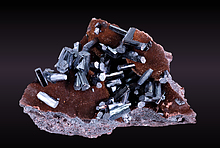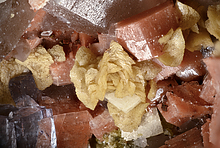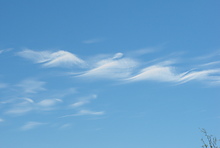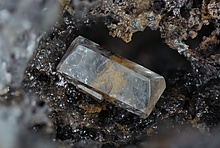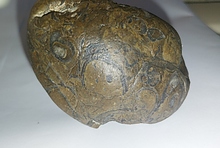Learning CenterWhat is a mineral?The most common minerals on earthInformation for EducatorsMindat ArticlesThe ElementsThe Rock H. Currier Digital LibraryGeologic Time
搜索矿物的性质搜索矿物的化学Advanced Locality Search随意显示任何一 种矿物Random Locality使用minID搜索邻近产地Search Articles搜索词汇表更多搜索选项
╳Discussions
💬 Home🔎 Search📅 LatestGroups
EducationOpen discussion area.Fakes & FraudsOpen discussion area.Field CollectingOpen discussion area.FossilsOpen discussion area.Gems and GemologyOpen discussion area.GeneralOpen discussion area.How to ContributeOpen discussion area.Identity HelpOpen discussion area.Improving Mindat.orgOpen discussion area.LocalitiesOpen discussion area.Lost and Stolen SpecimensOpen discussion area.MarketplaceOpen discussion area.MeteoritesOpen discussion area.Mindat ProductsOpen discussion area.Mineral ExchangesOpen discussion area.Mineral PhotographyOpen discussion area.Mineral ShowsOpen discussion area.Mineralogical ClassificationOpen discussion area.Mineralogy CourseOpen discussion area.MineralsOpen discussion area.Minerals and MuseumsOpen discussion area.PhotosOpen discussion area.Techniques for CollectorsOpen discussion area.The Rock H. Currier Digital LibraryOpen discussion area.UV MineralsOpen discussion area.Recent Images in Discussions
Techniques for CollectorsQuality of scopes
24th Feb 2012 01:05 UTCReiner Mielke Expert
24th Feb 2012 05:16 UTCRobert Meyer Manager
Easy is relative. You can try one of techniques in this set of articles http://web.ncf.ca/aa456/misc/resolution/
Good luck.
Bob
24th Feb 2012 14:25 UTCDavid Von Bargen Manager
24th Feb 2012 15:51 UTCOwen Lewis
If you buy also an eyepiece with a graticule marked on it, you can use the two in combination to work up a table for your 'scope that, at each level of zoom or lens combination option, allows you to know the size of your field of view and to scale accurately objects that you have under microscopic examination.

4th Sep 2012 23:38 UTCDonald Vaughn
After fixing the optics situation with the scope I ended up finding an antique (30's era) B&L Gem Scope for a steal but it had bad eyepieces. Once I had replaced the Eyepieces on the scope and began to use it I realized how much better the optical Quality of an well built antique scope over a low Cost modern scope. the amount of light that is passed through the B&l is like the difference between dusk and noon day sun.
5th Sep 2012 00:21 UTCReiner Mielke Expert

5th Sep 2012 10:34 UTCBart Cannon
The older Amscopes used a very crappy automotive dashboard illuminator.
Replace it with a halogen illuminator. I can explain how to do that.
It is all about flooding your subject with very bright light. That makes up for many optical weakness in the scope.
Every magnification level with a zoom scope is a compromise. I prefer fixed objective lenses.
My B and L stereozoom scope is lousy unless I use such a bright halogen bulb that I can burn my thumb knuckle. I had it rebuilt by Leica, for nearly $700, and it was still lousy compared to the Amscope or my Olympus SZ zoon scope. I use a halogen fiber optic ringlight on the Olympus. There is a Chinese company which sells the ringlight and halogen source for $150. Well worth the price, but not worth the shame of buying a Chinese product that is a total rip-off of a western product. But it seems I have no shame. There is no indication whatsoever of the model or manufacturer on the ringlight and light source assembly.
Amscopes come with a rotatable 1X 3X or 2X 4X objective turret. Get the 1X 3X for general work. They also have 10X or 20X eyepieces.
Optem has a standard eyepiece camera adapter that is inexpensive and excellent. I think that Optem has changed its name.
I modified my Amscope to operate from a 12 volt battery so that I can use it in the field at my car or on the rock pile, and if your $150 scope gets stolen out of your rig, you won't cry too hard.
A final comment. The substage illuminator on the cheapie Amscopes is excellent. GREAT for inclusions !
Bart
5th Sep 2012 13:45 UTCOwen Lewis
What qualities are necessary/very desirable depend rather on the tasks to which it is to be put. Not everyone requires the same and there is no point on spending money on features you are not going to use - or, even worse, buying a unit that cannot deliver well what it is you require, Here are a few general pointers that can be added to the very essentials already given by others. You should consider that you are buying an enabling system and not some unitary box. This system consists of different parts that, in almost all the good scopes, can be purchased separately from each other - so you can mix and match in your specification. It's convenient to consider your requirements under each heading separately, whilst not forgetting that the requirements in each part must come together into a well-integrated system. The main parts are these:
1. Base, vertical column, electrics, focussing mechanism (rack and pinion is best) and supporting arm for the optical pod. The whole should be massy and made of metal castings, the weight giving the whole unit stability and support to the optical pod with the minimum of vibrations and good control over fine focussing. Though they are presently rather out of fashion, the user comfort and convenience to be attained with a a tilting column design is considerable. Get one if you can - but the design and quality of the hinge need to be first-rate. A non-tilting design is preferable to one with a flimsy hinge or inadequate friction control over the tilt mechanism. The stage must support your specimens and permit lighting from above, below and from the side. Do you require very fine control of movement of a specimen in three dimensions - or will a simple arrangement for holding and rotating a specimen suffice?
2. Lighting. Good lighting is essential to effective microscopy and adds expense and complexity to your system. For most purposes, it's essential to be able to light a specimen from above, below and from both sides - and to be able to use any combination of these together. There is great convenience to have two lighting sources with intensity control built into/onto your microscope; these should consist of an overhead stage light, preferably with adjustable angling, and a light well that is fixed under and through the stage to provide transmitted light. It is also helpful if there is a fibreoptic light feed, supported in a semi-stiff goose-neck, from the light well to enable spot illumination of a specimen from oblique angles as required. For those who need to examine transparent crystals (all gemmologists and, I imagine, most mineralogists) will need a light well that is well-designed for the delivery of darkfield illumination as well as bright field illumination. Finally, the lightwell should be equipped with an iris that makes possible control of the apparent diameter f the light source. Concerns with heat dissipation limit the output than can be obtained from most light-well designs with 6 - 20W being typical. This will be often found to be inadequate (especially to meet the needs of photomicrography) and increasingly so at magnification above x40. Light that is gathered by the microscope's optics quite adequately at x10 mag is reduced to one quarter of that at x20 for the same level of illumination - but the eyes compensate by widening their pupils. At x40 the light gathered is reduced by the square root again to 1/160th - and the eyes can no longer fully compensate; the specimen starts to look just a little darker. At x80 one is sometimes left screaming for more light and at x160..... Serious microscopists - and especially photomicroscopists - working regularly at > x40 mag must budget for a powerful external light source, delivering its (adjustable) output to the place needed through one or two fibreoptic feeds. These are not cheap and typically cost more than the cheaper microscopes. Mine is towards the bottom of the cost range and is a fan-cooled box driving a 150W halogen lamp with dual fibreoptic feeds. There are other and perhaps better solutions where the tasks warrant the extra expense.
3. The optical pod. This is a metal or plastic shell that supports with rigidity and accuracy the optical trains it contains. This is the heart of the microscope. Avoid a plastic unit if you can - even at an up-market price (e.g. Leica). For gemmology/mineralogy and a range of other purposes, a stereo (binocular) eyepiece design) is to be strongly recommended as the 3-D view of specimens is helpful. Some pods allow for magnification to be zoomed across some range and others (turret design) simply step the available magnification between fixed levels. Zooming is nice but is non-essential - it adds cost and complexity. A poorly designed/made zooming unit is a much worse buy that a cheaper, simpler 'turret' lens switching unit. The magnifying power of the unit is determined by the optic magnification of the objective lens x the magnification of the eyepiece(s) x the zoom ratio (if any). Thus a 'scope with x10 eyepieces, an x1 objective and a 4:1 zoom will deliver magnification in the range x10 - x40. Where the pod design with accept one, the magnification range can be doubled by buying and fitting an x2 auxillary objective lens. Eyepieces should be x10 - except for turret-design pods where x15 or x20 may be preferred as (AFAIK) turret designs will not accept an auxillary objective lens. Eyepieces come as a pair and should not be permanently affixed to the pod (i.e.). Rather, they should be interchangeable. One (preferably both) eyepieces must have diopter adjustment to allow the 'scope to be properly set up for each users vision. For occasional photomicrocraphy (or where budget demands) photographs are most cheaply obtained by removing one eyepiece and slipping into its place a camera with an eyepiece tube adapter. Those striving for high quality photography, will better buy a pod with a trinocular port (one which can mount a camera whilst leaving the eyepieces in place). Not only is this convenient but, for several reasons, better quality photography is possible. In choosing a trinocular pod, check that the design does *not* divide the light in the optical train (by using a half-silvered mirror) between one eyepiece and the camera port. The whole of the light to one eyepiece should be diverted to the camera port by means of manual rotation of a prism or mirror. In general, pods made with prisms for internal redirection of the light train are preferable to those that use mirrors.
4. Integration and fitness for role. A prospective buyer who has got this far in specifying the requirements then needs to pay attention to the following:
- . The working distance (distance between the optical pod and the specimen) at which the pod will focus a specimenmust be compatible with (a) The range of lift in the rack and pinion focussing arrangement and (b) the amount of space you will need in which to mount/ manipulate your specimens. It's not unknown for the whole of a magnification range not to be useable because of the working distance specification and/or the lift available in the focussing mechanism.
- If you intend ever to.use an auxillary objective lens, then repeat the above checks with this in mind. the working distance required when using an auxilary is much less than that with the standard objective and there is more likelihood of a compatibility problem with the bottom limit of the rack and pinion focussing lift.
In my view, a top quality 30-40 year old scope in good conditiion is a better buy than any new 'brand-name' scope for under USD 2000. Many are representatives of a quality that it is hard to find at any price in today's stereo zoom microscopes. These themselves don't come cheap, generally fetching USD 1,250 and up. If you want to work at above x40, expect to spend another 500+ (at 'new' prices) for auxillary lighting. Bargains are to be found though. I recently bought a Xenon arc lamp unit, complete and in excellent condition for USD 40. New, one of these might be 1,000+.
If the budget simply won't stretch to USD 1,250 or a little more, probably the best of the 'economy' ranges is made in China and badged out under a range of names, the best known of which is probably GemOro. From the USA these are retailed by Sy Kessler (amongst others). The model that Kessler presently puts out for USD 250 is sold, badged out, at about double that by the Gemmological Association of Great Britain for sale to its students and others. Since Gem-A puts its name on these, units should perform reasonably and have some QA in their build. The Chinese are coming! :-)
5th Sep 2012 14:43 UTCDavid Von Bargen Manager
5th Sep 2012 16:02 UTCOwen Lewis

5th Sep 2012 17:59 UTCAlex Homenuke 🌟 Expert
Does any body know of any accessories of any kind available? - especially interested in 2x auxilliary lens and camera adapter head.

5th Sep 2012 20:58 UTCBill Lechner Expert
I recommend you check out the Zeiss website. I purchased a 2X objective magnifier from them recently and it's terrific.
Bill
7th Sep 2012 20:44 UTCOwen Lewis
-------------------------------------------------------
> I recently acquired a Zeiss Opton stereo mike made
> in the early '50's. It is so pleasant to use that
> I spend much more time scoping than I used to with
> my Nikon zoom. For light I use one or two
> gooseneck LED booklights from Costco - on sale
> $9.95. They clip on to the base. I forget to turn
> them off so have switched to rechargable AAA's
What works well must depend principally on the level of magnification you find yourself working at and the darkness of your specimen - if you need to look inside the specimen. If only concernedr to examine exteriors, the demands on lighting are less extreme. But there are *no* free lunches in this like do a little research n the net and dicover why professionals engaging even in low magnification work choose to buy light sources at USD 1,000+ rather than buy from CostCo and have the saved funds to spend of something else. Light sources for use in endoscopy is a fair place to start. And endoscopy only examines surfaces too :-)
> Does any body know of any accessories of any kind
> available? - especially interested in 2x
> auxilliary lens and camera adapter head.
Either must be compatible with your Zeiss scope. You can play safe and pay Zeiss prices - which is, of course, what Zeiss would like you to do - or you can save a whole slew of cash by from another source. The key difference and the one that you are paying all that extra cash forto buy Zeiss is that is that, if it does not perform to the published Zeiss specs, then it is their fault and you get your money back or a new one in lieu. Buy elsewhere and performance warranty switches from Zeiss to you - or (*maybe* you alternative suppplier). If you know enough to make good choices of this sort, my guess is that the question would not be asked. If that is so, then you need to trawl for suppliers who will contract to provide what you specify and to mate successfully with your Zeiss model of scope. Zeiss is a major manufacturer and given the model and year of manufacture there are more than one supplier of both items who will happily accept your business - at a price somewhere between 'floor' and what Zeiss demands. You decide who is going to carry the risk, make your choice and pay accordingly;-)




版权所有© mindat.org1993年至2024年,除了规定的地方。 Mindat.org全赖于全球数千个以上成员和支持者们的参与。
隐私政策 - 条款和条款细则 - 联络我们 - Report a bug/vulnerability Current server date and time: 2024.4.19 08:51:38
隐私政策 - 条款和条款细则 - 联络我们 - Report a bug/vulnerability Current server date and time: 2024.4.19 08:51:38






